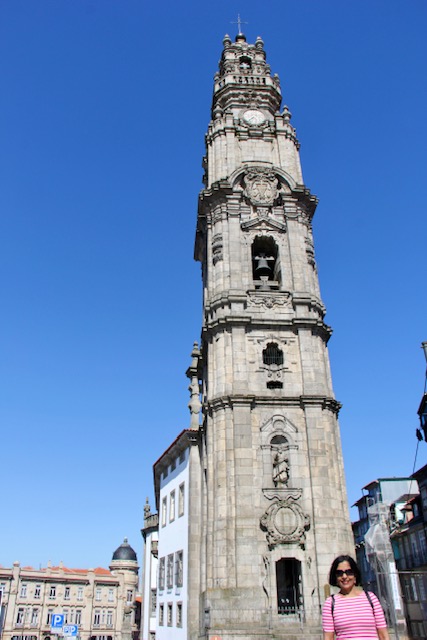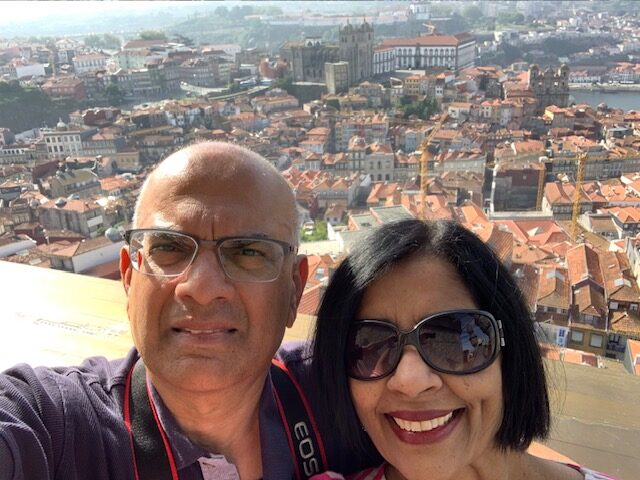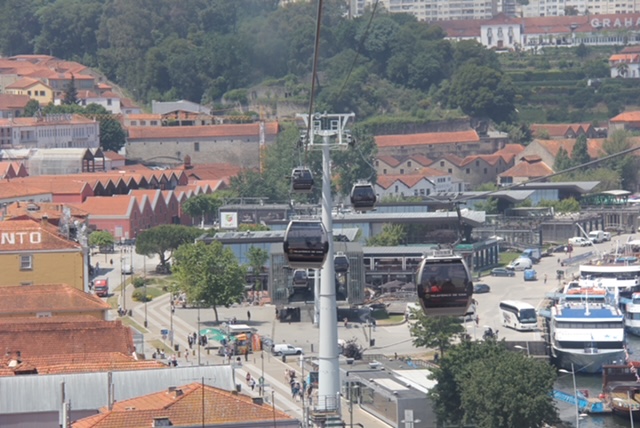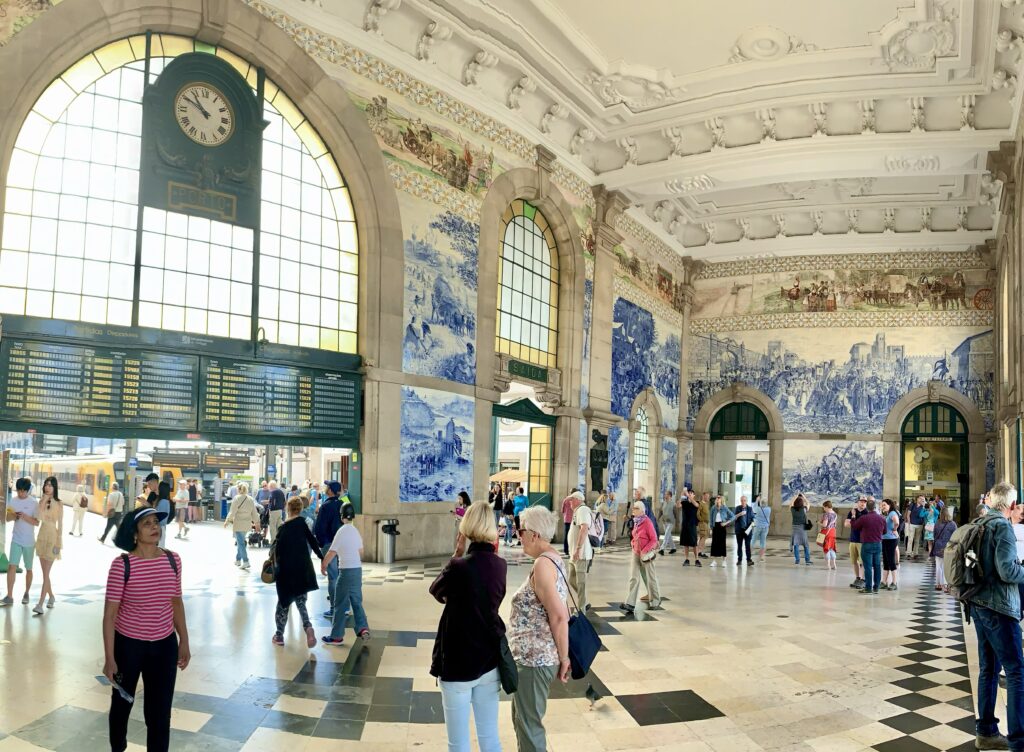The city of Porto is about 60km south of Braga and the drive took us less than an hour. We stayed in a hotel within walking distance to most of the sites around Porto.
Torre dos Clérigos – Built between 1732 and 1750, this Baroque church with its soaring 75-meter-tall bell tower, is the city’s most visible landmark. The bell tower and the monumental divided stairway in front of the church were completed in 1763. The main façade of the church is heavily decorated with baroque motifs.




You can climb the 240 steps to the top of the tower, and the effort will be rewarded with a breathtaking panorama of the river, the coastline, and the distant Douro valley.



Avenida dos Aliados – You can take a stroll the length of this broad double avenue which is lined on both sides with shops, stores, boutiques, cafés, and restaurants. At the foot of the thoroughfare lies Praça da Liberdade, a huge plaza with a statue of Peter IV riding a horse and holding the Constitution.


Ponte Dom Luis I – Spanning the mighty Douro river, this double-deck metal arch bridge is one of the most iconic structures in Portugal. Built in 1886, it connects Porto with Vila Nova de Gaia. The lower deck of the bridge carries cars, while the top deck is reserved for trains. Pedestrians can walk across using the narrow pavements set on either side of the road. The bridge was designed by Téophile Seyrig who previously worked for Gustave Eiffel. An outstanding view of the bridge can be had from the terrace of the Mosteiro da Serra do Pilar, on the south bank.




Vila Nova de Gaia – After walking across the Dom Luis bridge, we took a walk on the promenade along the river. There are also a ton of places to do Porto wine tasting. We also took a ride on the Teleférico de Gaia (cable car).
As you stroll Vila Nova de Gaia, you will be attracted by a rabbit sculpture created by Portuguese artist Bordallo II who often creates animal art using repurposed materials. The art piece is also a call for increased social awareness of ecological sustainability. The sculpture is positioned on the building in such a way that the rabbit is seemingly folded in two, with one half being multicolored and the other unpainted, which serves to illustrate the materials’ original colors. It is for these reasons that the artwork is called the “Half Rabbit.” Metal pieces, street signs, and plastic containers are just some of the materials used to create the rabbit’s eyes, ears, and whiskers.



Sé Cathedral – It is free to see the inside of the cathedral. €3 to explore the cloister area. Perched on a hilltop standing watch over the city, the Porto Cathedral (known as the Sé) was originally built between the 12th and 13th centuries, and features a variety of architectural styles, including Romanesque, baroque and gothic. The fortress-like church is the largest in the city and one of Porto’s oldest monuments.




Café Majestic – This majestic coffeehouse has a beautiful interior and the coffee and cake we consumed was expensive but quite tasty. J.K. Rowling visited this cafe when she was living in Porto, where she taught English.



Livaria Lello bookstore – This bookstore is a work of art. The interior is stunning with a stained-glass window ceiling, and a curved red staircase leading to the second floor. There is almost always a line to get into the bookstore, and you have to pay 5e to get in, although, you can get the money refunded if you buy a book. Also, the story about J.K. Rowling getting inspiration from this library is not true.




Igreja do Carmo – The blaze of blue and white azulejos (tiles) plastering the exterior and its striking facade, attracts visitors to this 18th-century Carmo church. The original azulejos found around the city date back to the 14th century when they were used as a key decoration element on streets, buildings, and monuments. Today, some of the tiles have been replaced by replicas after the originals were stolen.




São Bento railway station – One of the most beautiful railway stations in the world, this 20th-century station is located in the Historic Centre of Porto, which has been declared a UNESCO World Heritage Site and as a National Monument of Portugal. This building was constructed over a number of years, starting in 1904, based on plans by architect José Marques da Silva. The walls and ceilings are covered with 22 thousand tiles – azulejos – by Jorge Colaço, painter, caricaturist and potter. The murals represent moments in the country’s history and the multicolored panels depict rural scenes showing the people of various regions.


Igreja de São Francisco – This 14th century church underwent many renovations over the centuries, and is today an appealing mix of old and new styles. Its spectacular altar is covered with gold.

Porto city Tram – Taking a ride on the trams is one of the popular things to do in Porto. We took a ride on Line 22.

Church of Saint Ildefonso – Built in 1739, the church is named after an early, 7th century Bishop of Toledo, Ildefonso. The church’s facade is adorned with striking blue tiles which depict the life of Saint Ildefonso and stories from the Gospels. It is located near Batalha Square, on Rua de Santa Catarina.

Palácio da Bolsa – The Stock Exchange Palace, is a historical building in Porto. Located next to the Igreja de São Francisco, it was built on the site of Igreja de São Francisco Convent, after a fire destroyed the convent during the Liberal Wars in 1832. Building work began in 1842 and most of the palace was finished by 1850, but the decoration of the interior was only completed in 1910. The Palácio da Bolsa has been classified as a National Monument since 1982.
